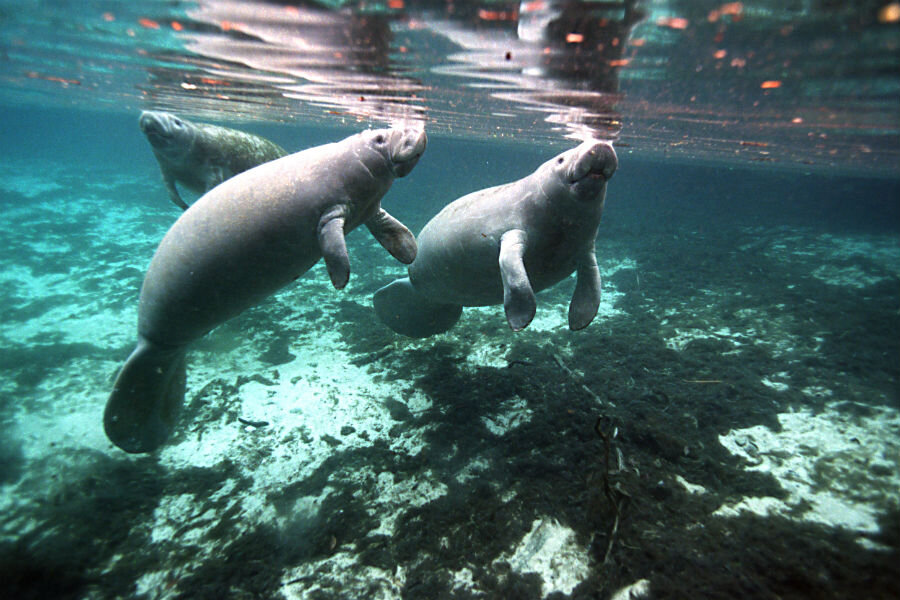Are Florida's manatees no longer endangered?
Loading...
Florida’s sea cow may soon lose its federal status as an endangered species.
Noting a rebound in the West Indian manatee's population, the US Fish and Wildlife Service proposed Thursday to change the listing of the marine mammal from “endangered” to “threatened” under the Endangered Species Act.
After the Service formally published its proposal on Friday, the public will have 90 days to comment on the manatees' conservation status, after which the Service will make its decision.
“While there is still more work to be done to fully recover manatee populations, their numbers are climbing and the threats to the species’ survival are being reduced," said Michael Bean, Principal Deputy Assistant Secretary for Fish and Wildlife and Parks at the Department of the Interior in the agency’s Thursday press release. "Today’s proposal is a positive step that recognizes the progress citizens, conservation groups, the State of Florida, the Commonwealth of Puerto Rico and our own Service employees have made working together.”
The proposal comes after years of growth in the manatee population, which is based mainly in the Caribbean and along the coastlines of Florida and Puerto Rico in the US. The West Indian manatee has been legally protected in the state since the late 19th century to prevent hunting the animals for their fat, bones, and skin, and has been listed as endangered since the Endangered Species Act was passed in 1973. But the manatees' population continued to decline, thanks to changing environmental conditions and pervasive threats posed by boats and human divers. By 1991, only 1,267 of the mammals were estimated to live in Florida.
Since the 1990s, though, conservation efforts and habitat protections have led to an increase in the creatures’ population and a reevaluation of their endangered status. The size of the West Indian manatee community in Florida is now estimated at over 6,300, nearly a fourfold increase over the past quarter century. The species’ total population is now estimated at 13,000.
This resurgence in population has led the government to consider changing the manatees’ long-held status as endangered, which the 1973 Act defines as “in danger of extinction throughout all or a significant portion of its range”, to threatened, or “likely to become an endangered species within the foreseeable future throughout all or a significant portion of its range.”
This reclassification would not change the West Indian manatee’s current federal protections, but some worry that, despite recent population growth, the manatees' situation is not yet stable enough to move it off the endangered species list.
While the number of manatees estimated to swim off of Florida’s coast today is the highest in decades, the Florida Fish and Wildlife Conservation Commission still tracks hundreds of manatee fatalities in the state every year. The Commission confirmed 830 manatee deaths in 2013, the most recorded since it began reporting the figures in 1974.
This number could be a consequence of the species’ growth in recent years, but it is still a large percentage of the overall population and suggests that threats to the manatees’ lives are not yet resolved.
The Fish and Wildlife Service’s final decision on the designation will come later this year. Until then, it plans to continue focusing on increasing the sea cows’ numbers and maintaining safety in their habitat.
“The manatee’s recovery is incredibly encouraging and a great testament to the conservation actions of many,” said Cindy Dohner, the Service’s Southeast Regional Director. “Today’s proposal is not only about recognizing this progress, but it’s also about recommitting ourselves to ensuring the manatee’s long-term success and recovery.”







